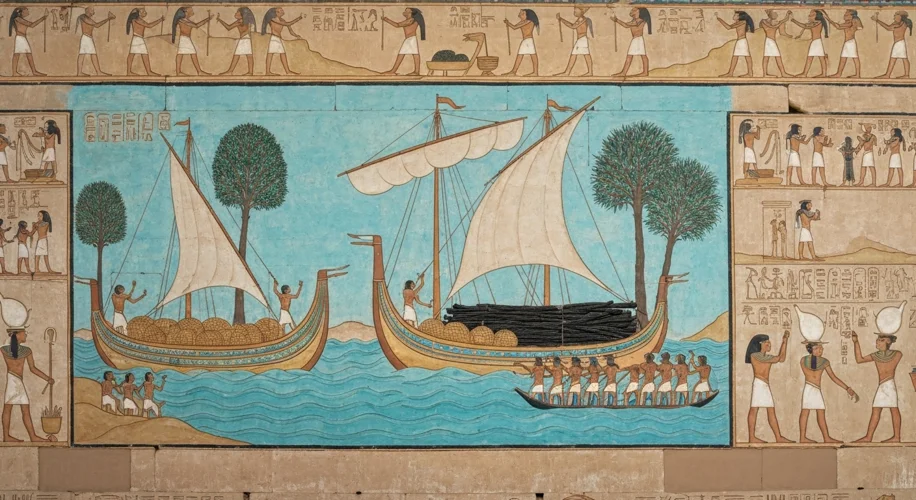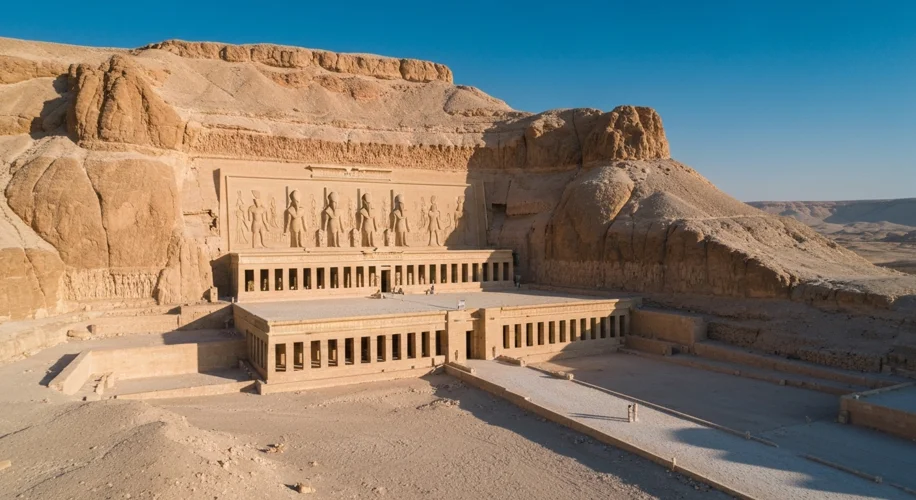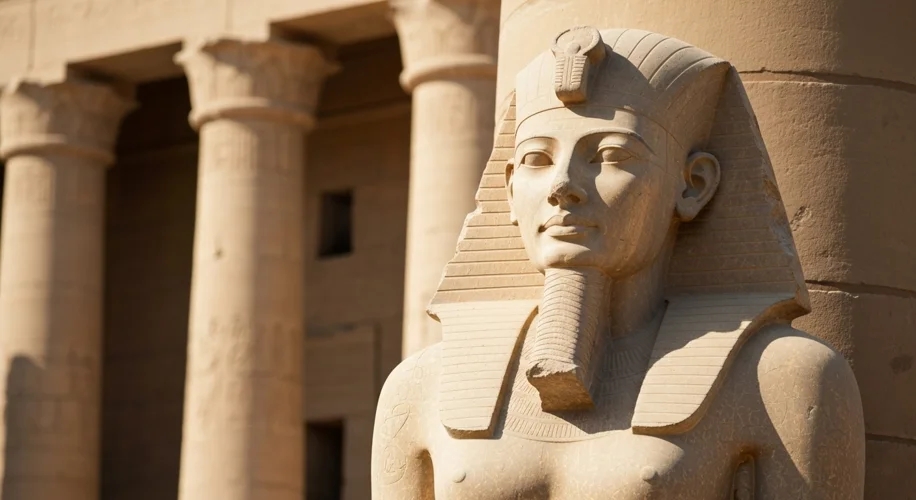Picture this: the year is 1479 BCE. The air in Egypt hangs thick with the scent of lotus blossoms and the weight of tradition. For millennia, the throne of the pharaohs had been a man’s domain, a sacred office passed from father to son. Yet, standing before the assembled court, radiating an aura of quiet authority, was a woman. Her name was Hatshepsut, and she was about to shatter centuries of precedent.
Hatshepsut, the fifth ruler of the Eighteenth Dynasty, was no ordinary queen consort. Born a princess, the daughter of Thutmose I, she was groomed for influence. When her father died, the throne passed to her young half-brother, Thutmose II. Hatshepsut married him, solidifying her place within the royal bloodline. But when Thutmose II died, leaving behind a young son, Thutmose III, Hatshepsut stepped into the role of regent. Little did anyone know, this was merely a prelude to a reign that would redefine Egyptian kingship.
Initially, Hatshepsut ruled as regent for her young nephew, Thutmose III. However, within a few years, she made a bold and unprecedented move: she declared herself pharaoh. This was not a simple usurpation; it was a carefully orchestrated assertion of her divine right. To solidify her claim, she adopted the full regalia of a male pharaoh, including the kilt, the false beard, and the nemes headdress. Her statues and reliefs depicted her with masculine features, a deliberate choice to align herself with the traditional image of kingship. This was not an act of deception, but a political necessity in a society where the pharaoh was seen as the embodiment of divine masculine power.
Hatshepsut’s reign, spanning over two decades, was a golden age for Egypt. The Eighteenth Dynasty was a period of immense prosperity and expansion, and Hatshepsut proved to be a formidable leader. She was a master of diplomacy and trade. One of her most celebrated achievements was the re-establishment of trade routes, particularly the expedition to the Land of Punt. This legendary voyage, meticulously documented on the walls of her mortuary temple, brought back exotic goods like incense, ebony, ivory, gold, and even live trees – a testament to Egypt’s reach and influence.

Beyond trade, Hatshepsut was a prolific builder. She commissioned numerous magnificent construction projects, restoring temples damaged by earlier rulers and erecting grand monuments in her own name. Her mortuary temple at Deir el-Bahari is a breathtaking architectural marvel, a multi-terraced complex carved into the cliffs, adorned with intricate reliefs detailing her divine birth and her achievements. She also significantly contributed to the Karnak Temple complex, adding obelisks and chapels that still stand as testaments to her piety and power.

Hatshepsut’s success was not without its challenges. The traditional power structures, accustomed to male leadership, likely viewed her ascension with a mixture of awe and apprehension. The historical record shows a concerted effort, primarily during the reign of Thutmose III, to erase Hatshepsut’s name and image from history. Her cartouches were chiseled away, her statues defaced, and her monuments attributed to her predecessors or successor. This campaign of erasure, while damaging, ultimately failed to extinguish the memory of this remarkable pharaoh.
The reasons behind this systematic attempt to remove Hatshepsut from the historical narrative are complex and debated by Egyptologists. One prevailing theory suggests that Thutmose III, upon assuming full power, sought to legitimize his own reign and reassert the traditional male lineage of succession. By removing his predecessor, who ruled for an extended and successful period, he could present a more direct and unbroken line of male pharaohs, thus reinforcing the patriarchal order. Another possibility is that later rulers, perhaps from different dynasties, also wished to distance themselves from an unconventional female pharaoh, reinforcing their own claims to legitimacy. Regardless of the precise motivations, the erasure was thorough, leading to Hatshepsut being largely forgotten for centuries, only to be rediscovered and appreciated by modern scholars.
Despite the attempts to obliterate her memory, Hatshepsut’s impact on Egypt was undeniable. Her reign was characterized by peace, prosperity, and a flourishing of arts and architecture. She projected an image of divine authority and stability, fostering economic growth through her ambitious trade expeditions. Her building projects not only beautified Egypt but also served as powerful propaganda, reinforcing her divine right to rule and her connection to the gods. The exquisite craftsmanship and grandeur of her surviving monuments, particularly her mortuary temple, speak volumes about the artistic and architectural achievements of her era.
Hatshepsut’s story is a compelling testament to female ambition, political acumen, and the ability to defy societal norms. She navigated a deeply patriarchal society, not through brute force, but through strategic maneuvering, divine assertion, and a remarkable capacity for leadership. While her legacy was deliberately obscured, archaeological discoveries and scholarly research have gradually pieced together the narrative of her extraordinary reign, restoring her rightful place as one of ancient Egypt’s most influential and impactful pharaohs. She remains an enduring symbol of female power and a reminder that even within rigidly defined traditions, individuals can rise to redefine their own destiny and shape the course of history.

